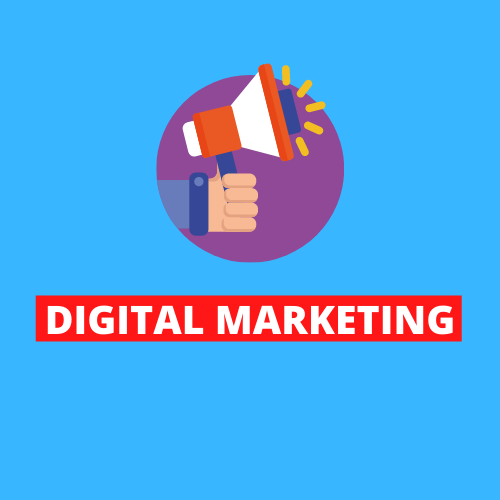
Have you ever had an online ad follow you for days on end? It appears as you’re scrolling through social media, on the sidebars of your favorite news column, and above the navigation bar of that website you love. Like a ghost, it tracks your behaviors with a quiet, sometimes creepy, determination. This “e-haunting” is thanks to digital marketers, who are tracking your online behaviors to showcase their products and drive sales.
Within the last few years, digital marketing efforts have shifted their strategies. Before, marketers relied heavily on third-party cookies to deliver highly-targeted ads. Through various web browsers, they were able to collect sensitive data about consumers and retarget campaigns based on this highly-specific information. Utilizing these strategies led to severe privacy risks and the distrust of the public. There is a reason why so many internet users block cookies from their web browsers to this day.
Fortunately, the world of digital marketing is moving in a new direction. This new age focuses on protecting consumer privacy through less invasive advertising tactics. The tides began to change in 2017 when Apple introduced its Intelligent Tracking Prevention program. This program started the trend of blocking third-party cookies, which are now in the process of being phased out legally by 2023. Browsers like Safari and Firefox are already following Apple’s lead, while Google Chrome is well on its way.
New research from AdRoll suggests that there are many new tools and strategies that digital marketers will be using when the cookies crumble for good. The e-commerce marketing leader highlights many other channels to use that are secure, informative, and much more creative.
Contextual Targeting
Contextual targeting is not a new digital marketing strategy, but research suggests that it is making a comeback. Although often confused with the behavioral targeting of cookies, it does not make decisions based on individual users’ data. Context-specific ads are personalized for an audience as a whole; they are relevant to a website’s content and its audience. For example, an ad for a coffee brand could appear on a recipe page for pancakes. Or, an advertisement for an airline could pop up on the travel section of a new site.
Contextual targeting protects user privacy while remaining relevant to the interests of users. It also allows ads to look and feel organic without being over-personalized. Automated technologies are helping digital marketers find their footing in this “post-cookies age.” A great example is AdRoll’s brand awareness solution, which uses artificial intelligence to help brands locate their target audiences and match their ads more accurately. The company’s AI takes note of keywords, content, and website imagery to find the best results.
Overall, contextual targeting offers digital marketers the ability to boost brand awareness to broader audiences without relying on behavioral tracking.
Email Lists
Email lists are a great, cookie-less way for digital marketers to engage with a brand’s established audience. This example of first-party data is exactly what it sounds like: It is a list of email addresses that users have offered a company in return for special news and updates.
The purpose of email lists is to create a more direct relationship with the consumer. Users who sign up for email lists are more likely to convert because they are already interested in the company. By including conversion forms and call-to-actions, marketers can increase ROIs and get a feel for what customers are looking for. They can also ask specific questions of subscribers to collect more data. Trust is built when customers share their preferences and develop their data profiles independently.
Email lists protect customers’ information from third parties as well, and the relationship stays between the company and the user’s email inbox. This exclusivity makes it a fool-proof way to securely improve customer interactions and drive sales.
Organic Social Media
Digital marketing isn’t always about creating advertisements, and it is just as important to drive sales through organic social media strategies. Organic social media marketing includes all content pieces that are not paid promotions. Marketers can engage with a brand’s followers by posting consistently and creatively without spending a dime.
So how does a company maximize its reach without targeted ads? First, marketers need to focus on their brand’s identity. Selecting strong keywords for SEO purposes is a great way to start. Keywords help users find products and services when scrolling through their search engines. Strong keywords target a company’s niche audience while also remaining broad enough for new leads to discover. Incorporating these keywords into social media posts can improve a brand’s visibility to relevant audiences. The same consistency should be considered when improving a brand’s visual aesthetic.
Marketers must consistently create and post content once this branding is established across the board. Adroll suggests planning one’s content cycle up to three months in advance. To avoid feeling overwhelmed by a busy content calendar, incorporating evergreen content is a great way to repurpose pieces when something new cannot be made.
To successfully keep followers engaged, marketers should mix up the different content pieces that are posted. Whether it is a fun TikTok dance or an Employee of the Week series on Instagram, organic social media is most successful when it feels authentic. The consumer’s values and interests should be the focus.
An Emphasis on the Creative
Although third-party cookies were an easy way for marketers to track consumer data, the future of digital marketing looks much more innovative. The age of privacy is asking the e-commerce space to learn about consumers through relationship-building tactics instead. With the average American seeing 4,000 to 10,000 ads per day, there is a need for new channels like these to replace the “e-haunting” of the past and build consumers’ trust.
from WordPress https://ift.tt/cOTb7PW
via IFTTT

0 Commentaires